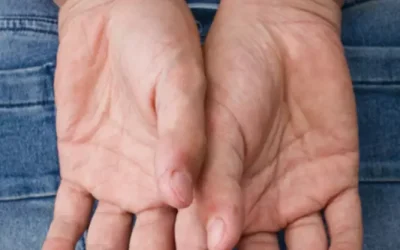Content
Addiction can also affect all areas of your life, including family relationships, finances, career, and your reputation. It can take years to rebuild your life and heal broken wounds after you recover from your addiction. Not only is overdose a potential risk, but long-term use of any drug (no matter how much or how often one is using), can make a person vulnerable to its long-term effects. Each time you use drugs, they interfere with the way your brain works, disrupting its chemical make-up and changing the way it communicates with the rest of the body. Each class of drug has a different effect on the brain, but all have the potential to leave lasting changes that impact the way a person thinks, learns, and behaves.
- In order to maintain high-quality performance, some musicians take chemical substances.[103] Some musicians take drugs such as alcohol to deal with the stress of performing.
- The graph shows Kaplan-Meier product-limit estimates for left-truncated data, including deaths from all causes, deaths related to human immunodeficiency virus (HIV)/acquired immunodeficiency syndrome (AIDS) only, and HIV/AIDS-nonrelated deaths only.
- Heroin can also produce alterations in consciousness, sensations of heaviness, decreases in mental function, nausea, dry mouth, intense itching, increased body temperature, coma or death.
- Long-term side effects of marijuana can increase your risk for heart attack and testicular cancer as well as cardiopulmonary issues, such as chronic bronchitis.
- Regular marijuana use can also lead to cannabis hyperemesis syndrome, which can cause you to experience cyclic episodes of nausea, vomiting, and dehydration that often require medical care.
The tendency of one addiction to predispose an individual to another type or form of addiction. A synthetic analog of an illegal drug, devised to circumvent drug laws through changes to chemical compounds. The authors thank Dr. Ronald B. Geskus and Prof. Dr. Roel A. Coutinho for critically reviewing an earlier version of this article. The authors are indebted to Else te Brake for designing sober house the questionnaire and organizing data collection for the dropout study and to research nurses Maja Totté, Ans Snuverink, and Joke Bax for daily administration of the ACS. Regardless of how addiction manifests, it is vital that the person gets help before it’s too late. This can create an unhealthy drive to seek more pleasure from the substance and less from more healthy experiences.
Opioid painkillers
This can result in cognitive and behavioral changes and deficits that may remain even after someone stops using. Generally, drug misuse or SUD refers to the use of psychoactive drugs, which are substances that affect the brain. The effects on the body depend on the type of substance a person uses and their health history. A center or hub that organizes recovery networks regionally and nationally to facilitate supportive relationships between individuals in recovery as well as family and friends of people in recovery.

This type of treatment helps patients focus on resocialization, taking accountability, and understanding destructive behavior. Counselors may also offer employment training and support services. Gaining the ability to stop abusing drugs is just one part of the recovery process. When people enter treatment for a substance use disorder, addiction has often taken over their lives. Abusing drugs can quickly take charge and replace all of the things that were once enjoyable. Drug addiction can disrupt how individuals function in their family lives, at work, and in their community.
The Power of Supportive Relationships and Social Networks in Alcohol Recovery
Severe substance abuse can leave intestinal holes and long-term digestive issues. Drug and alcohol abuse can affect your immune system both directly and indirectly. Some types of substances can suppress cells that fight infections and disease. When you’re addicted, you’re usually not eating nutritious food, exercising, or getting adequate sleep — all practices that keep your immune system in shape to fight off illness. When your brain is physically dependent on a drug after chronic use, you can suffer from significant physical and emotional withdrawal symptoms and intense cravings when the drug wears off.
Oxford Houses are a type of self-sustaining recovery residence, first developed in 1975. They are non-professional, and require that residents are abstinent from alcohol and other drugs. While they are not affiliated with 12-step mutual-help organizations like Alcoholics Anonymous, members are traditionally encouraged – though not mandated – to attend meetings. Members pay rent, and can stay there as long as needed, provided they follow house rules. While there is a manual that lays the initial groundwork for a new Oxford House to aid in quality control, decisions around consequences for individuals who break rules are up to the other house members.
Medications for Alcohol Use Disorder (MAUD)
Under the 2008 Mental Health Parity and Addiction Equity Act, both private and public insurers are obligated to provide comprehensive and equitable coverage for substance use disorder and mental health treatment and services. The Parity Act requires standards for substance use and mental health benefits to be comparable to – and no more restrictive than – the standards for other medical conditions. An ongoing process used to determine the medical, psychological, and social needs of individuals with substance-related conditions and problems. The use of medications, in combination with counseling and behavioral therapies, to provide a “whole-patient” approach to the treatment of substance use disorders. Medications used are approved by the Food and Drug Administration (FDA) and are clinically driven and tailored to meet each patient’s needs.
What happens when you take a drug for a long time?
Long term health impacts such as liver, kidney and heart problems or cancer (depending on the type of drug used and how frequently it was used) Dental health problems (cavities and gum disease) Mental health issues such as anxiety and depression. Dependence.
Most importantly, having access to treatment programs may ultimately impact long-term success rates. In order to maintain high-quality performance, some musicians take chemical substances.[103] Some musicians take drugs such as alcohol to deal with the stress of performing. As a group they have a higher rate of substance abuse.[103] The most common chemical substance which is abused by pop musicians is cocaine,[103] because of its neurological effects.
Cocaine
Different tools work for different people, but ongoing therapy and self-help groups such as Narcotics Anonymous help many. In detoxification, you stop taking the substance(s), allowing them to leave your body. Depending on the severity of the SUD, the substance or an alternative may be tapered off to lessen the effects of withdrawal. You can go through detoxification in both inpatient and outpatient settings.
- Depending on the severity of the SUD, the substance or an alternative may be tapered off to lessen the effects of withdrawal.
- An addiction treatment program can save your life, offering you the support you need to overcome substance abuse.
- 12-Step meetings that are only available to individuals who identify with having a substance use disorder or think that they may have a substance use disorder and want to stop substance use.
An appeal that involves a “medical-necessity determination” or other issue related to the medical appropriateness of care. Direct United States government funding of religious organizations to provide substance use prevention and treatment. International fellowship for individuals with problematic drinking. Prevent children from accidentally taking medication by storing it out of reach.
Drugs can kill slowly over time, but they can also cause a fatal overdose. Any misuse of any type of drug puts a person at risk for having an overdose that may be fatal. That https://www.healthworkscollective.com/how-choose-sober-house-tips-to-focus-on/ risk increases when using street drugs, because the strength or purity is impossible to know. The risk also increases when combining drugs or using drugs with alcohol.
- You may behave in a way that is out of character for you, like becoming hostile, paranoid, or even violent.
- Another danger that is well known to long-term drug abusers is mounting tolerance.
- The lungs are an important organ used by singers, and addiction to cigarettes may seriously harm the quality of their performance.[103] Smoking harms the alveoli, which are responsible for absorbing oxygen.
Long-term side effects of marijuana can increase your risk for heart attack and testicular cancer as well as cardiopulmonary issues, such as chronic bronchitis. Regular marijuana use can also lead to cannabis hyperemesis syndrome, which can cause you to experience cyclic episodes of nausea, vomiting, and dehydration that often require medical care. Drug use can also lead to overdose, which can cause coma, brain damage, and death. The Centers for Disease Control and Prevention (CDC) reports that over 100,000 people died from a drug overdose in the United States between April 2020 and April 2021.






